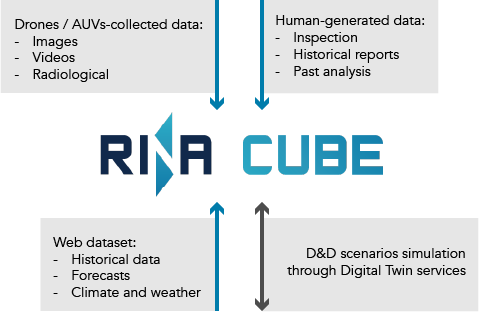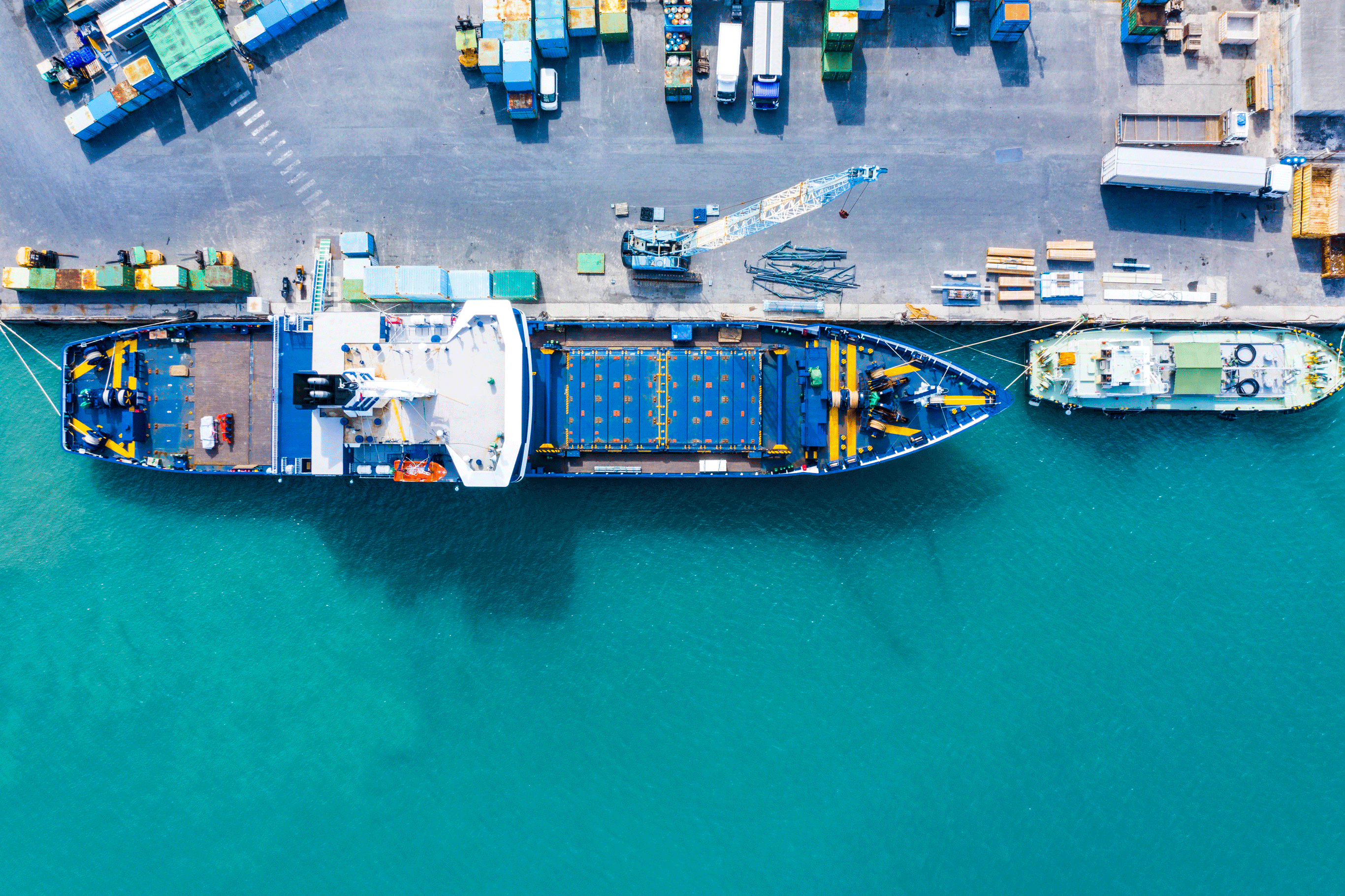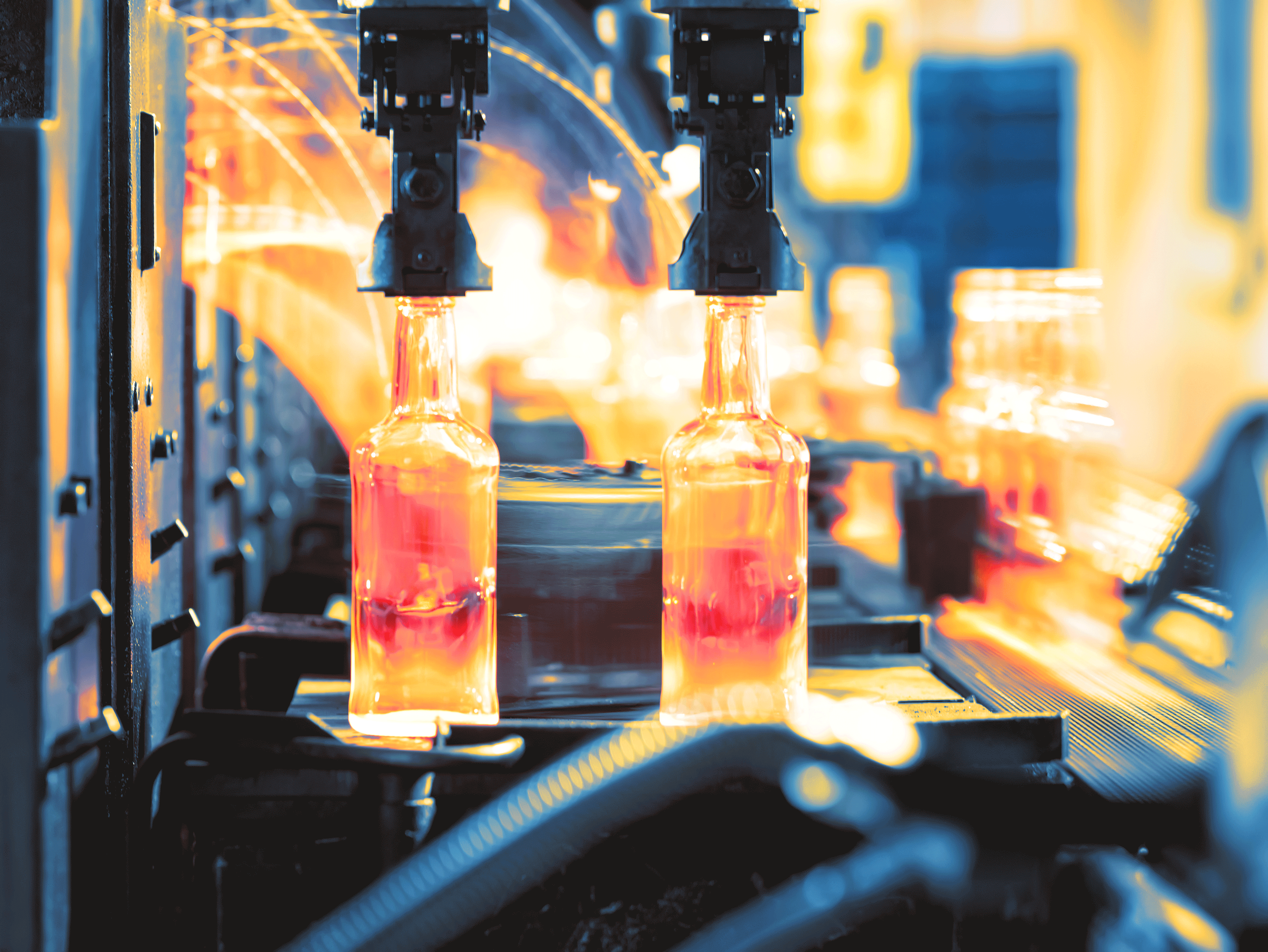

The concept
of a “digital twin” is fairly recent. Moreover, its application in the nuclear
power sector is new, and brings additional challenges due to the dynamic nature
and significant uncertainty of the nuclear process.
A digital
twin is a digital representation of an intended or actual real-world physical
product, system, or process that can be used for practical purposes such as
simulation, integration, testing, and monitoring. It has been recognized that
digitalization across the life cycle of the nuclear industry could deliver
significant advantages, providing improved process reliability, which would reduce
scheduling and cost risk while ensuring operations are undertaken safely.
The digital
twin includes the use of numerical models that cover the operation of the
asset. These models can simulate scheduled operations and the process flows of
waste material, extending down to chemical models that can account for changes
in speciation and solubility as a function of process conditions. Statistical
tools, developed to calculate the uncertainty in plant data, can also be incorporated
into predictions.
The Cleandem project,
funded by HORIZON 2020 programme, is currently studying digital twin
applications for nuclear decommissioning activities. Data from drones and other
specific tools would be plugged into the digital twin in order to model the
dynamics of the system, from starting stage to fully decommissioned state.

The strategy adopted is typically to
undertake early phase operations in a cautious manner (leading phase) in order to
gather information during early retrievals (learning phase). This knowledge
allows acceleration of the decommissioning in later phases. The digitalization
of the information manager has the potential to extract as much useful
information as possible from retrievals to improve predictions of how to
operate in later years.
It can also
be important to consider additional variability due to the availability of
resources and failure (e.g. mechanical) of plant equipment. We can add to this
complexity the dynamic changes in the system chemistry which in turn impacts on
our ability to treat the effluent. All of these processes require different
types of models and the usual practice is to develop independent models in
software specifically and optimally designed for the purpose of solving a
particular type of real-world problem.
The adoption
of a digital twin provides a simple, easy-to-use interface that can be accessed
by any interested party through the use of the models. In this way, it can also
increase the number of stakeholders who can participate in improving a system’s
overall process reliability.

Ships’
diesel engines contribute around 80% of the total carbon emissions produced in
ports, impacting both the port area and the local surroundings.
In order to
reduce these emissions, Onshore Power Supply (OPS) is set to form a key part of
the energy transition, offering one of the best ways to decarbonize shipping
activity while in port.
The main
benefit of OPS, also known as ‘cold ironing’, is to enable vessels to shut down
their auxiliary engines at berth while still maintaining onboard services.
This
alternative energy solution offers a crucial method of lowering carbon
emissions. Furthermore, OPS eliminates the vibrations and noise pollution from
ships’ engines, improving the quality of life in the areas surrounding the port.
However, several
factors currently limit the full deployment of OPS in ports.
Firstly, in
order to be economically viable, shore-side electricity supply needs to be more
cost competitive than the ship’s own fuel consumption. As a consequence, appropriate
incentive programmes should be created to encourage ship owners to invest in
the onboard systems needed to plug into onshore power sources.
Moreover,
significant investment is required in OPS berths in terms of facilities,
infrastructure, technologies and equipment. Public funding will be a key factor
in promoting OPS installation in all shipping sectors.
There is
currently no international legislative framework in place to mandate or
facilitate the use of OPS in ports worldwide.
However, significant
progress has been made in Europe in the form of Directive 2014/94/EU, which
establishes a common framework of measures for European Union Member States to use
alternative fuel infrastructures.
According
to the Directive, OPS shall be installed as a priority in EU maritime and
inland ports by the end of 2025, provided the economic and environmental
benefits are consistent. This will provide a further incentive for shipowners.
Due to the
variety of factors that can potentially hamper OPS investments, an integrated
approach across the different disciplines has proven to be the best route
towards successful project development.
Such an
integrated approach needs to include a comprehensive feasibility study to
evaluate the viability of the investment prior to the implementation of any OPS
project.
Several
aspects need be taken into account based on the port location, readily available
power supply, and berthing capacity.
These
include: identification of the best technical solution to fit the purpose of
the specific port and terminal, estimation of all project-associated costs,
revenue calculations, legal implications, assessment of environmental, social and
economic benefits to the community, as well as to the industrial and commercial
sectors of the territory.
The success
of OPS projects also relies on the involvement of ship owners in the
decision-making process, in order to foster more investment in onboard OPS
technology.

Today,
we are seeing an increasing number of initiatives being developed in the transition
to full decarbonization. Within this framework, hydrogen represents a key pillar
of the energy transition necessary to limit global warming to 2 Celsius degrees
and to achieve net zero emissions by 2050.
The
energy sector, with its focus on transmission and distribution networks, is now
being asked to deliver significant volumes of hydrogen from production sites to
end users.
Where
feasible, the exploitation of existing pipelines through life extension and
conversion from natural gas to hydrogen service (i.e., repurposing or
retrofitting) is the first option to consider. However, this is not always technically
possible or economically viable, and the realization of new “hydrogen-ready”
pipelines has become mandatory.
Despite
this, the regulatory framework relevant to hydrogen service and hydrogen
applications is still incomplete.
RINA
is working hard to fill the regulatory gap, and is now presenting two “H2-Ready
Method Statements”.
The
first helps carbon steel line pipe manufacturers certify and deliver ready
made products for hydrogen transmission and distribution networks.
With
this Method Statement, a specific line pipe production can be declared compliant
with the highest H2 usage factor (up to 72%) according to the applicable
principles of Option B (Performance-Based Design Method) of ASME B31.12:2019 “Hydrogen
Piping and Pipelines”.
The
Method Statement covers applications and limitations, as well as a series of
requirements such as material traceability, manufacturing route, steel grade,
chemistry, toughness, mechanical properties, welding and hydrotest. This
enables manufactured carbon steel line pipes to be certified H2-ready.
The
second Method Statement developed by RINA applies to metallic valve types intended for the
construction of gas transmission and distribution
pipelines, and hydrogen piping systems. It covers the requirements relating to
all the valve’s components (metallic and non-metallic) at different functions
and working at different stress levels, and assists metallic valve
manufacturers in the qualification of their H2-ready products.
Several
requirements, such as applications and limitations, material requirements,
design criteria for unlisted valves, and functional requirements, are specified
in this Method Statement in order to obtain the qualification of a H2-ready
metallic valve.
Once
the above requirements are satisfied, an official statement is issued by RINA declaring
the given line pipe/valve production inspected, verified, and H2-ready
according to the relevant Method Statement.
In
this way, RINA is helping to fill the regulatory gap, enabling industry to keep
pace with the rapidly evolving demands of decarbonisation and the energy
transition.

"H2iseO
Hydrogen Valley" is an Italian hydrogen-based industrial value chain for a
sustainable mobility system in Val Camonica, a UNESCO World Heritage Site,
along the non-electrified Brescia-Iseo-Edolo railway line.
The project has
three phases:
- The first phase involves the arrival of
the first 6 hydrogen-powered electric trains, which will be built by Alstom and
delivered by 2023. Between 2021 and 2023, a first hydrogen production plant
will also be built at Iseo station
- In the second phase, another 8 hydrogen
powered trains will be delivered, thus completing the replacement of the entire
fleet with totally green vehicles. In addition, one or possibly two further
hydrogen production plants are planned for the Brescia and/or Edolo areas by
2025

- In the third phase, the hydrogen
produced by the plants can be used for vehicles other than trains, starting
with public transport and the 40 buses managed in Val Camonica by FNM
Autoservizi
RINA is proudly to
be working on this project delivering design consultancy services for several of
the hydrogen production, storage, and distribution sites. As an environmental
engineer, I firmly believe that this is a groundbreaking project, contributing
to the achievement of the “first of its kind” system in Italy.
Once
realized it will be a case study that should guide and assist the development
of similar projects, significantly contributing to an historic change in the
mobility sector. While there are challenges every day, it is a credit to the
team behind the project who have made it possible with their strategic vision
and strong personal commitment.
The
decarbonization process is “The Challenge” of our generation. I strongly
believe that the achievement of our decarbonization goals depends first on a behavioural shift and
we all need to contribute with a personal
commitment to change.
The
"hydrogenisation" of the Brescia-Iseo-Edolo railway line as the first
to use hydrogen means that hydrogen production and distribution infrastructures
can be set up in the area to support the local economic and industrial sector.
In this sense,
the "H2iseO Hydrogen Valley" will not only decarbonize a railway line
but also encourage the development of an economic and industrial district based
on hydrogen in the area, thus contributing to the cultural change.

RINA is active
in the hard-to-abate sector, in particular in supporting companies develop
innovative combustion systems to lower their CO2 emissions. Green hydrogen can
be a viable substitute for natural gas, initially by blending it, and in the
longer term by potentially replacing it altogether.
RINA is
supporting the steel and glassworks sector, using its expertise in hydrogen
combustion to develop projects to decarbonise melting processes. The goal is to obtain a
full-scale pilot
capable of demonstrating the technology of production by hydrogen combustion.
The challenges
that have to be met are of a different nature, from the heat input aspects that
have to be guaranteed to the NOx emission aspects that have to be controlled by
tuning the combustion optimally to demonstrate that the properties of the
resulting glass are equivalent to the traditional method.
At present, we
are at the stage where we have identified a technological pathway that can be
followed but which must be supported by dedicated funding in order to be able
to incorporate the fast-changing technology.
Glass melting furnaces use energy from
natural gas combustion, so can potentially be converted to use hydrogen as an
alternative fuel. Hydrogen combustion has several differences compared to
natural gas combustion, with potential impacts on the thermodynamics and
kinetics of the glass production process, as well as on the furnace and the
combustion systems industrially adopted.

The strategy adopted is typically to
undertake early phase operations in a cautious manner (leading phase) in order to
gather information during early retrievals (learning phase). This knowledge
allows acceleration of the decommissioning in later phases. The digitalization
of the information manager has the potential to extract as much useful
information as possible from retrievals to improve predictions of how to
operate in later years.
It can also
be important to consider additional variability due to the availability of
resources and failure (e.g. mechanical) of plant equipment. We can add to this
complexity the dynamic changes in the system chemistry which in turn impacts on
our ability to treat the effluent. All of these processes require different
types of models and the usual practice is to develop independent models in
software specifically and optimally designed for the purpose of solving a
particular type of real-world problem.
The adoption
of a digital twin provides a simple, easy-to-use interface that can be accessed
by any interested party through the use of the models. In this way, it can also
increase the number of stakeholders who can participate in improving a system’s
overall process reliability.
¹ The project has received funding from the Fuel Cells and Hydrogen 2 Joint Undertaking (now Clean Hydrogen Partnership) under Grant Agreement No 779606. This Joint Undertaking receives support from the European Union’s Horizon 2020 Research and Innovation program, Hydrogen Europe and Hydrogen Europe Research.”
A solar fuel is a synthetic chemical fuel, like
hydrogen, methanol or methane, which is produced from a common substance like water
or carbon dioxide by applying solar energy.
The production of solar fuels complements power
generation from photovoltaic and other types of solar power plants, and is set
to play an important role in the challenge to exploit the sun’s huge potential
energy.
Indeed, according to the US Department of
Energy, the amount of solar energy striking the earth's surface in one hour
(170 PWh) is enough to support the world's energy consumption for an entire
year (160 PWh).
Solar fuels have two principal advantages: they
address complementary sectors and final uses, including “hard to abate” sectors
that are difficult to electrify; and they allow the adoption of different
storage technologies, thus increasing the flexibility of the energy system in response
to fluctuating energy needs.
Moreover, solar fuels have the potential to replace
current fossil fuels, thus reducing GHG and pollutant emissions, and thus contributing
to the transition to renewables and the diversification of our energy supply.
For these reasons, the production pathways for solar fuels are increasingly being
studied at EU and international level.

The production of solar fuels can be carried
out through different technological pathways including electrochemical,
chemical, thermochemical and biochemical processes. Within these pathways, the
most viable solution is currently hydrogen production through water electrolysis
with electricity from solar PV.
However, there are other promising technologies
for the future including photoelectrochemical cells (combining both stages in a
single device producing hydrogen directly from solar energy), and CO2
hydrogenation, producing methanol from green hydrogen and carbon dioxide
captured from the air or coming from a CCS plant.
The market for solar fuels is currently at an
early development stage, but its potential to meet worldwide energy needs has
been estimated at 4%-6% by 2050 and 6%-10% by 2100.
Besides the technological challenges, the main driver
to achieving these targets will be economic: on the one hand, the carbon
emissions price is expected to increase in future, while on the other hand solar
electricity costs are expected to decrease. The market outlook for solar fuels
should therefore become favorable in the coming decades.
RINA has an increasingly high level of
expertise in this field. The company provided technical assistance to the
European Commission in 2014-2015 on “Algae Bioenergy Siting, Commercial
Deployment and Development” (together with Padova University and SELC), and in
2019-2020 on “Solar Fuels Research & Invest” (with EY, IMEC and CEPS).
Moreover, RINA has been involved since 2021 in
the Spotlight project (“Sunlight Production of Chemical Fuels”), led by TNO and
co-funded by the European Commission under Horizon 2020.
The aim of the project is to develop and
validate a photonic device and chemical process concept for the
sunlight-powered conversion of CO2 and green H2 to
methane and methanol, which is fully compatible with our current infrastructure
and suitable for multiple applications.
¹GLOBAL OFFSHORE
WIND REPORT 2020. Global Wind Energy Council. Available online: https://gwec.net/global-offshore-wind-report-2020/
²IRENA–International Renewable Energy
Agency. Available online: https://www.irena.org/ (accessed on 20 July 2020).

Biofuels are set to play a key role in the
fight to reduce carbon emissions. Potentially applicable in both the transport
and energy sectors, this relatively new form of energy is derived from a range
of different oils including vegetable oil, animal fat, waste oil, microbial oil,
and waste cooking oil.

As the world’s most populous country, China
is a major generator of waste cooking oil. Today, the country’s waste oil
supply is around 3 million tons per year, with a potential to rise to 10
million tons annually.
China’s biofuel is mainly exported to the
European Union, which today consumes 40% of all worldwide biodiesel supplies. Trade
between the two partners is expected to grow further following the introduction
of the new EU Renewable Energy Directive RED II. Under the directive, EU
members will move to generating 32% of their energy from renewables by 2030,
with a possible uplift in this percentage to be decided this year.
As a result, Chinese biofuel exports to the
EU have the potential to more than triple by 2030 compared to the 2 million
tons recorded in 2021, an effective compound growth rate of 14.3% per year.
RINA is today one of the leading
certification bodies for biofuel in China, issuing several hundred biofuel
certificates each year. The first ever biofuel certificate in the country, as
well as the first sustainable aviation fuel certificate, were both issued by
RINA.
By offering high levels of professional
service to producers, backed by broad experience, RINA is helping Europe move
towards a more sustainable era.
The journey towards decarbonization is a
complex one where multiple solutions and technologies will play a role. All
will contribute to achieving the goal of zero emission on a global scale across
the sectors.
Carbon capture is indeed a critical part of the
portfolio of technologies for sustainability particularly in relation to industrial
emissions. Carbon capture technologies find their applications in specific point
sources where concentrated emissions occur. It
is not an economical and technical viable solution for the widespread emission
point as per the land mobility sector case.
Removing carbon dioxide can support the transition
towards cleaner energy vectors but can also support the decarbonization of CO2
coming from industrial processes: indeed, carbon capture means preventing emissions
from entering the atmosphere after they have been produced, either as a product
of a combustion or as byproduct of a specific industrial process.
Which industry?
In the first case, carbon capture must be seen
as a transition measure towards the adoption of cleaner energy vectors.
In the other cases, CO2 production is a direct
and unavoidable consequence of the industrial process. For example, in the cement
industry, where 50% of the CO2 produced from the manufacturing process comes
from the decarbonation reactions of calcium carbonate - the reaction underlying
the cement production process itself, carbon capture is probably the most
effective solution to deploy.
The use of carbon capture in industrial
processes dates backs to the 1930s, when chemical solvents were used to absorb
CO2 in the natural gas industry in order to obtain pure methane. Later, physical
solvents were used in gasification plants using coal, petroleum coke, and
biomass feedstocks. In the middle 20th century, adsorption processes
using solid sorbents enabled the gas separation in hydrogen production in refineries
and nitrogen production.
Modern methods of carbon capture
In recent years, membranes have been developed
to capture CO2. Today carbon capture technologies are usually categorized as
follows: post-combustion, pre-combustion and oxy fuel combustion.
Post-combustion technologies are applied to
exhaust gases and do not require significant changes in the original process:
gases are first treated to remove particulate matter and the oxides are then
put in contact with solvents, typically an aqueous amine solution, to absorb
the CO2 and enable nitrogen and oxygen to be released into the atmosphere.
Pre-combustion refers to removing CO2 from
fossil fuels before combustion is completed, while oxy fuel combustion is the
process of burning a fuel using pure oxygen instead of air, producing
approximately 75% less flue gas than air fueled combustion and exhaust
consisting primarily of CO2 and H2O.
Of course, the selection of the most
appropriate technology must be done according to the characteristics of the
flue gases in terms of temperature, pressure, CO2 content and flow, but also
considering how it modifies the industrial process.
Nowadays, CO2 is a commodity, with more than 200
million tonnes (Mt) of CO2 used every year globally, mainly in the fertilizer industry
(for manufacturing processes) and the Oil & Gas industries (for reservoir
enhancement).

All elements of the
carbon capture and storage value
chain are mature and have been in commercial operation for decades, but incremental
improvements to carbon capture technologies will continue to reduce cost and improve
performance - especially in low-concentration dilute gas streams. However, transport
infrastructures will need to scale up to increase the quantities of removed CO2
and its segregation or further reuse, while tackling the issue of international
logistics.
Groundbreaking infrastructure projects
RINA has been recently involved in studies and
assessments to repurpose pipelines originally designed for the export of
hydrocarbons from operating reservoirs which will soon be reemployed to inject
CO2 in depleted wells in UK. Similarly, RINA is working on Approval in
Principle of the conversion of two existing gas pipelines in Italy with the
final objective to certify the fitness for service in the new operating
condition.
New challenges will come soon from terminals,
where assets originally designed for LNG could be soon converted to handle CO2:
the compatibility of existing equipment must be assessed, and our laboratory
assets are fully equipped for conducting tests - up to full scale including offshore
burst test - in pure CO2 environments or in the presence of other contaminants.
Fracture initiation-propagation, corrosion, internal coating behavior and
leakage are all areas of investigations in which RINA has longstanding
expertise and experience.
Moving to sea and air
Furthermore, new technological breakthroughs will
soon enable carbon capture to be deployed in new applications beyond industry:
examples include direct air capture (DAC) and CO2 capture from seawater.
Capturing CO2 from the air requires overcoming
technical - and consequently economic challenges - due to the much greater
dilution of carbon dioxide compared to an industrial point source.
Meanwhile, oceans - with a CO2 concentration
100 times greater than air - are responsible for soaking up some 30% of
humanity's total annual carbon emissions resulting in the ecosystem's degradation
due to ongoing acidification processes and the depletion of oxygen content.
In the forthcoming scenario, the CO2 value
chain could play a key role in decarbonization, bringing together industries,
dedicated transport assets - via ships and via pipe - final segregation sites
or new end users.